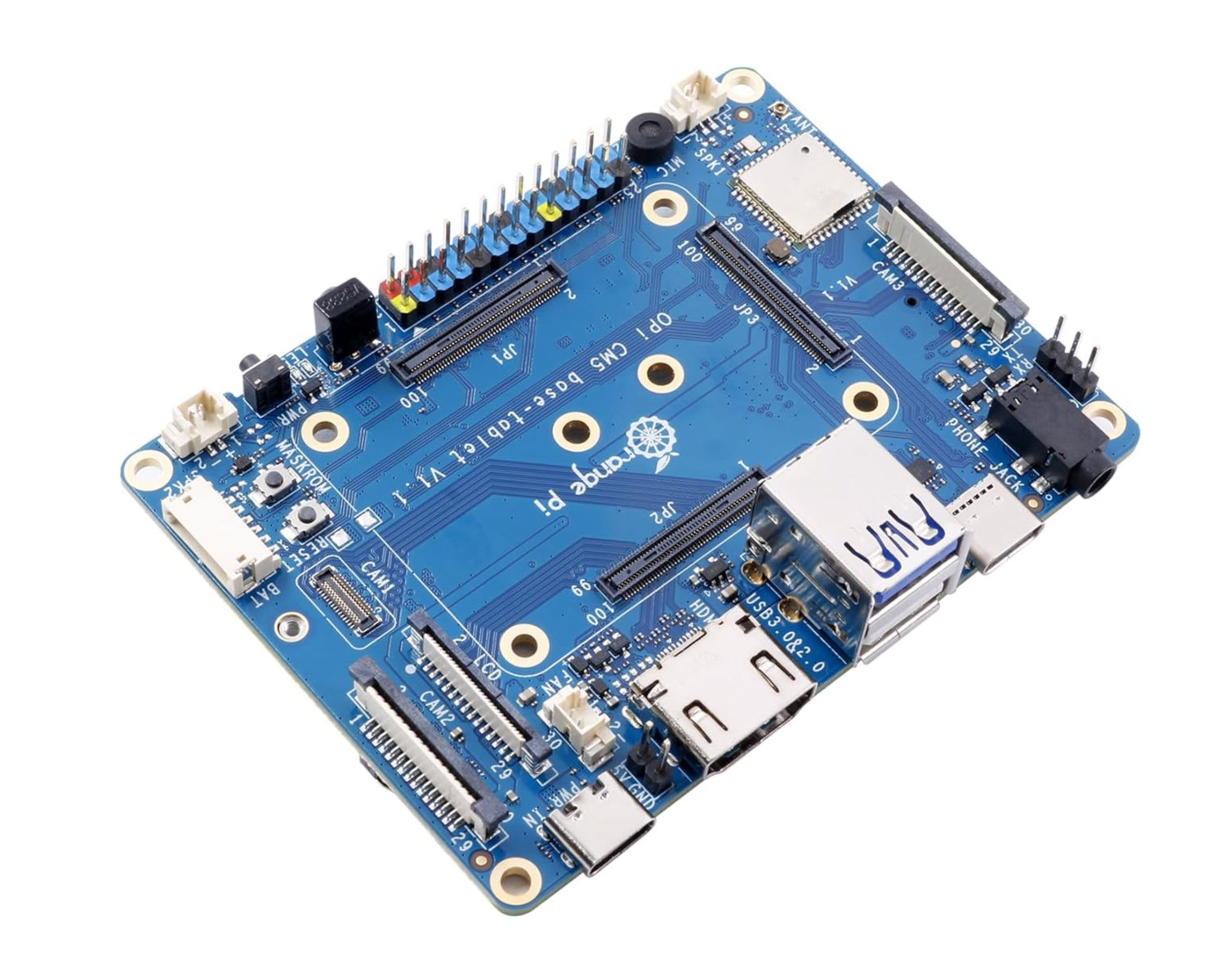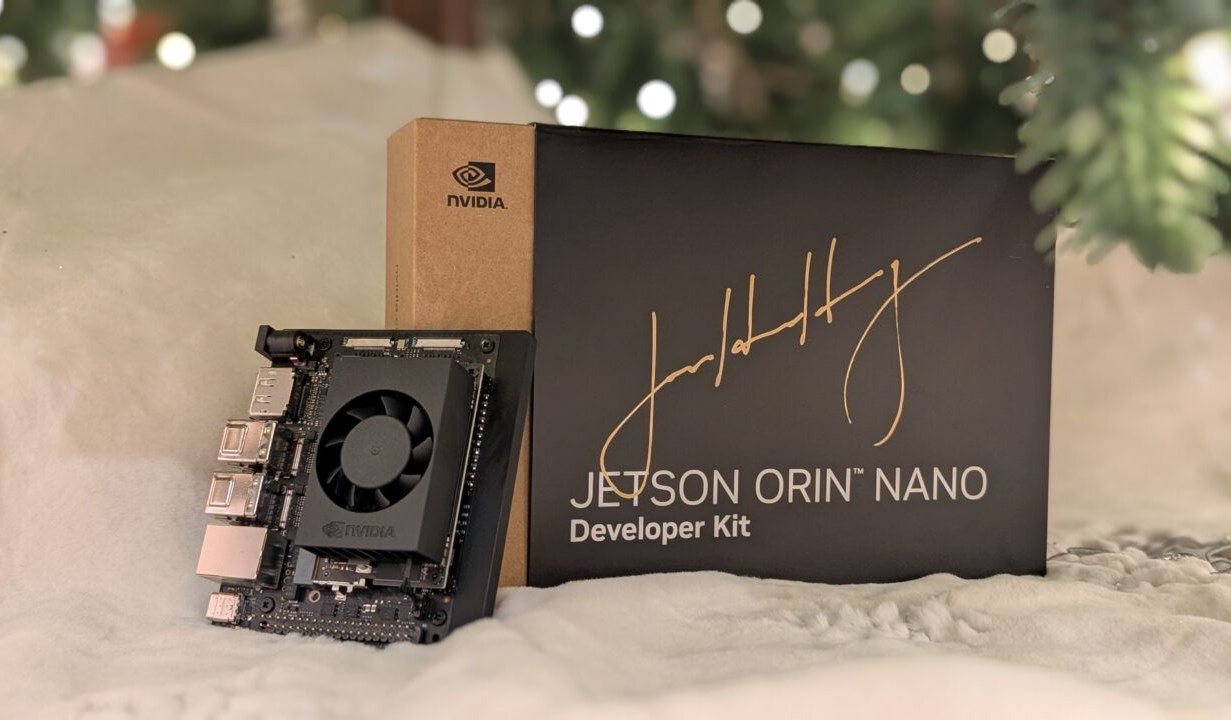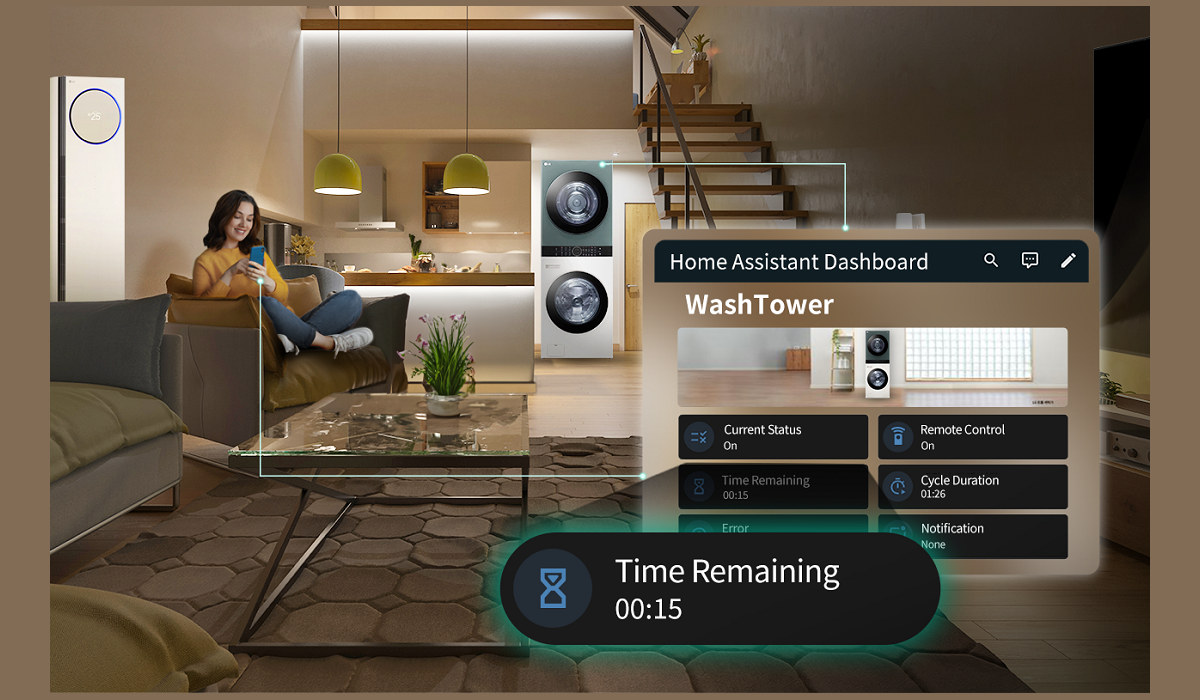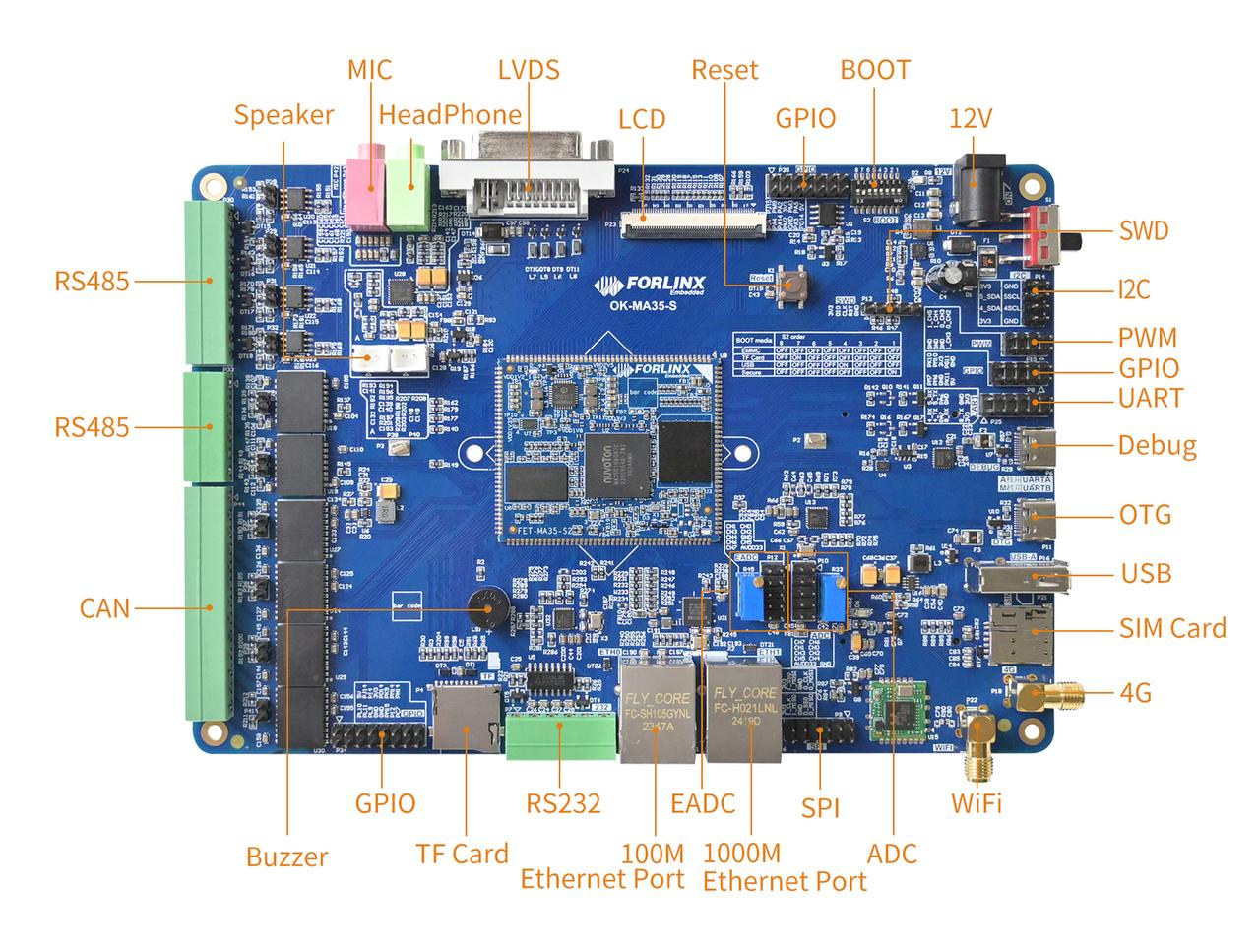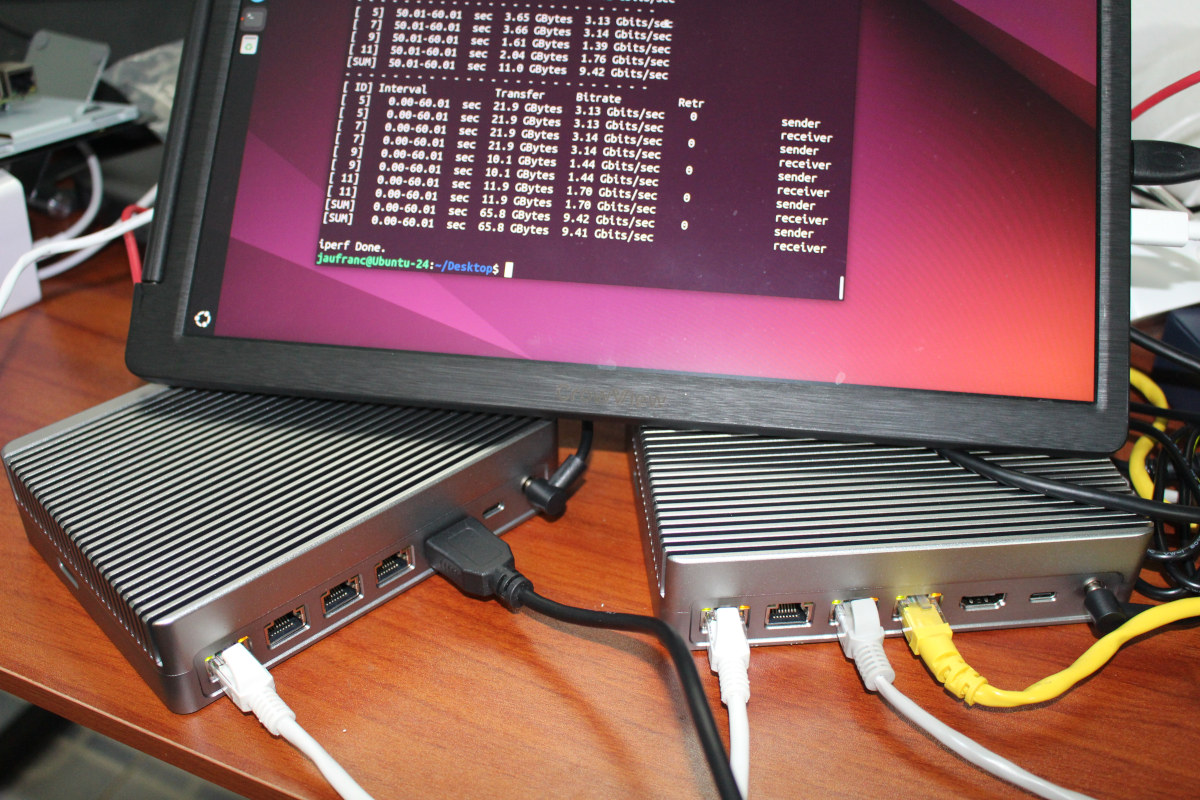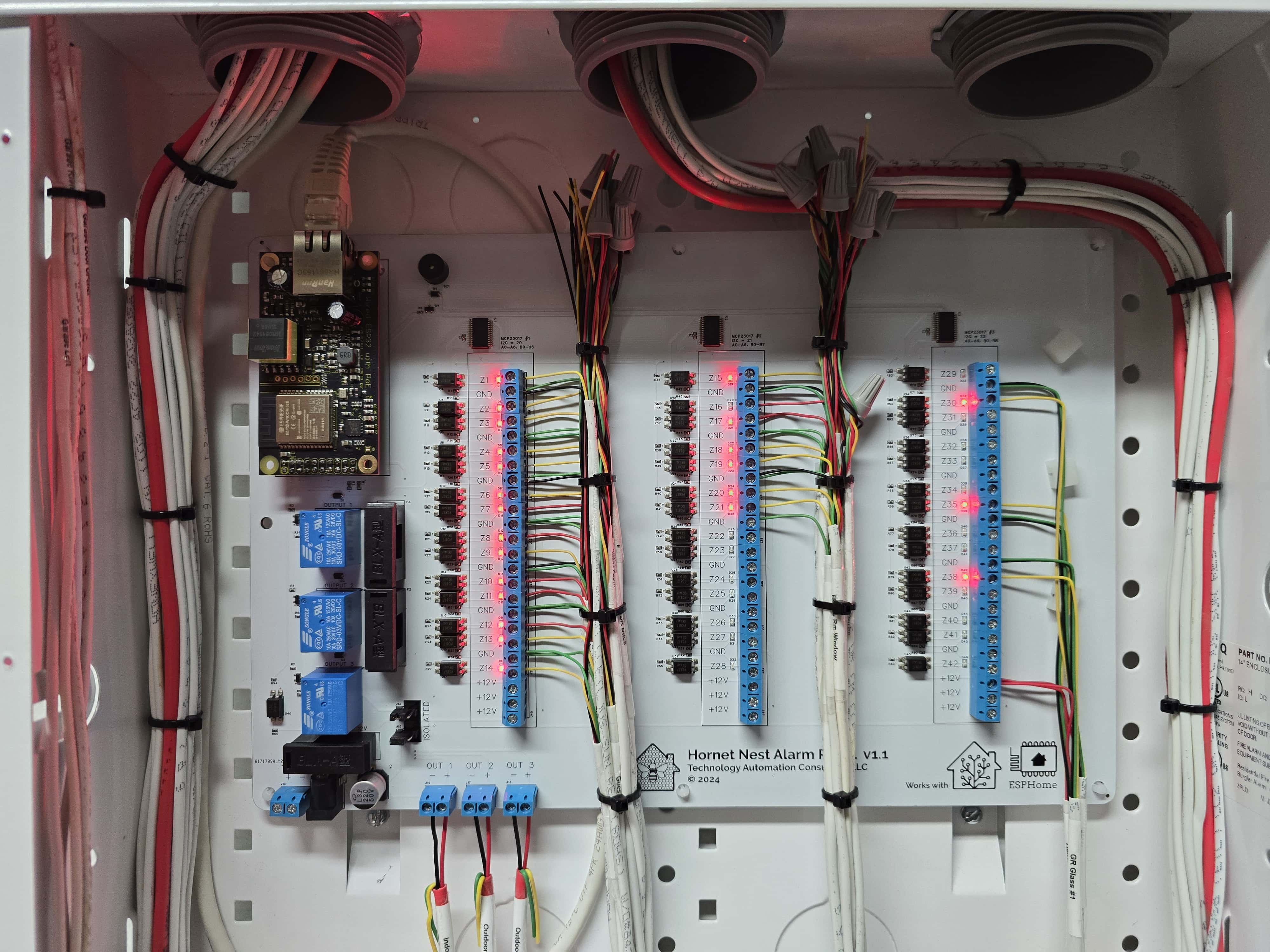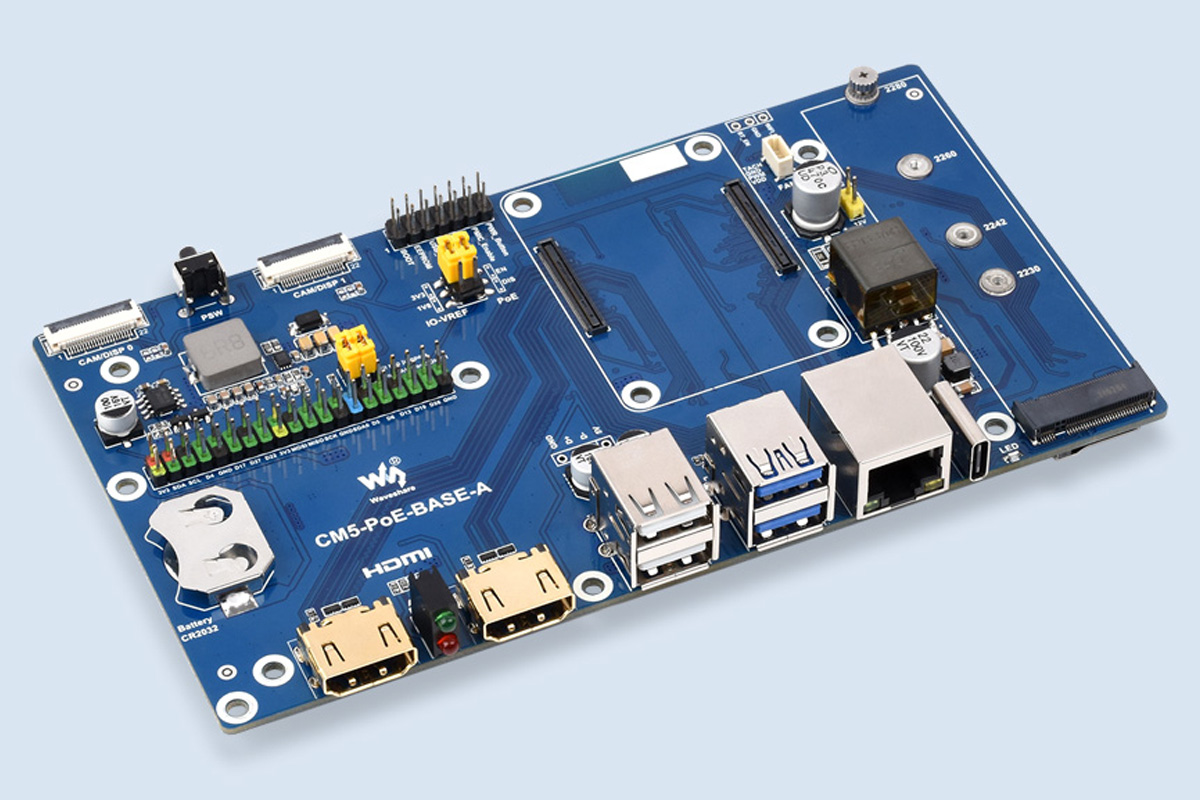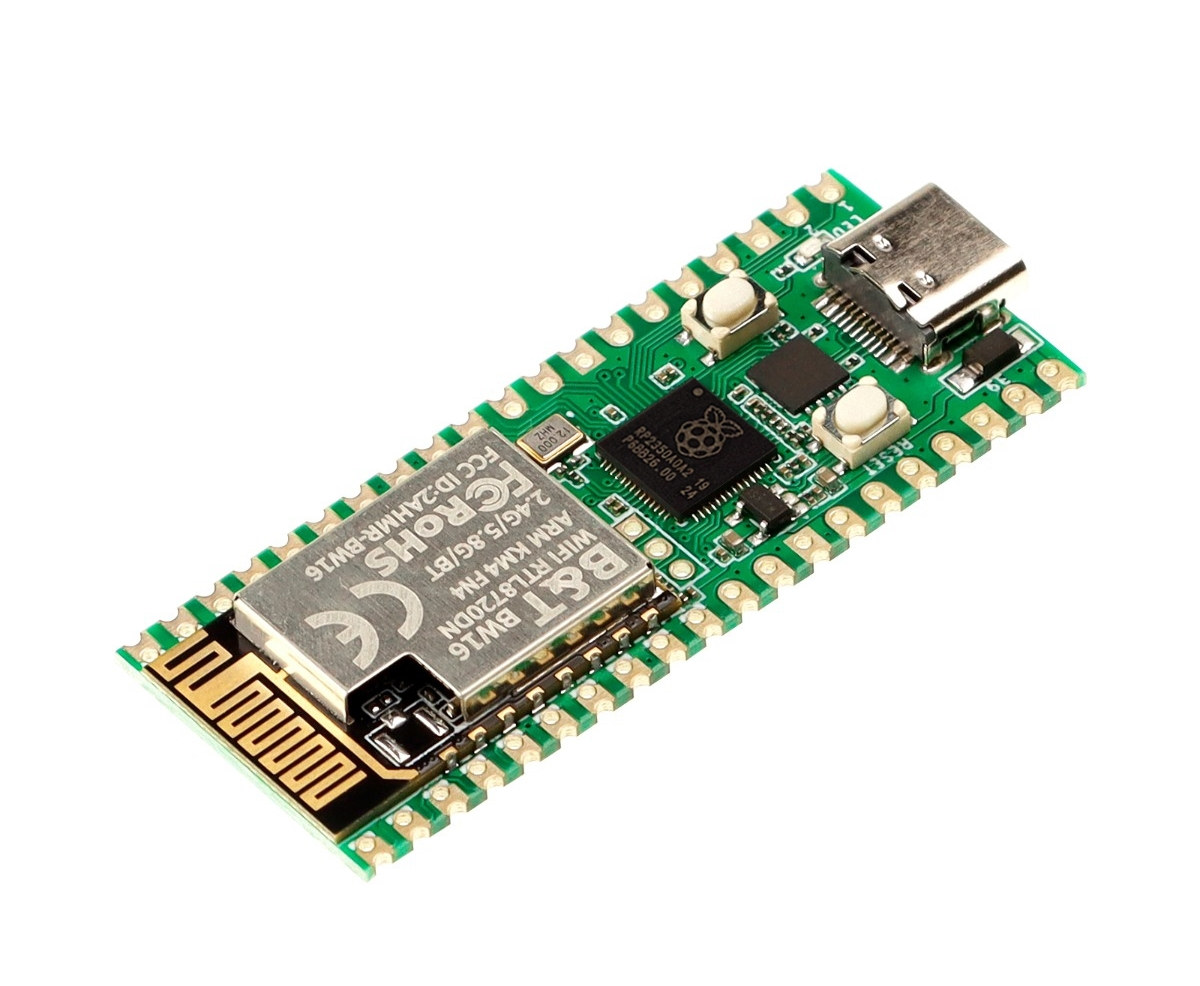The Orange Pi CM5 was launched as an alternative to Raspberry Pi CM4/CM5 last July with a Rockchip RK3588S octa-core Cortex-A76/A55 SoC, up to 16GB LPDDR4x, 256GB eMMC flash, and three board-to-board connectors maintaining partially compatibility with the Raspberry Pi Compute Module 4. At the time, Orange Pi also introduced the Orange Pi CM5 Base Board with HDMI 2.1, one Gigabit Ethernet port, two 2.5GbE ports, USB 3.0/2.0 ports, four camera connectors, and more. The company has now launched the Orange Pi CM5 “Tablet” Base Board without Ethernet ports, making use of WiFi 5 and Bluetooth 5.0 for networking instead. It keeps many of the same features but adds a 26-pin GPIO header, an M.2 Key-M socket for SSD storage, DP 1.4 and MIPI DSI display interfaces, and various audio interfaces. However, it does with “only” three camera interfaces. It’s quite thick to be used in a typical tablet, but […]
$249 NVIDIA Jetson Orin Nano Super Developer Kit targets generative AI applications at the edge
NVIDIA Jetson Orin Nano Super Developer Kit is an upgrade to the Jetson Orin Nano Developer Kit with 1.7 times more generative AI performance, a 70% increase in performance to 67 INT8 TOPS, and about half the price, making it a great development platform for generative AI at the edge, mostly robotics. We’ve seen several AI boxes and boards in the last year capable of offline generative AI applications like the Firefly AIO-1684XQ motherboard or Radxa Fogwise Airbox which I reviewed with Llama3, Stable diffusion, Imgsearch, etc… A product like the Fogwise Airbox delivers up to 32 TOPS (INT8) and sells for around $330 which was very competitive then (June 2024). However, the Jetson Orin Nano Super Developer Kit will certainly disrupt the market with over twice the performance, a lower price, and a larger developer community. NVIDIA Jetson Orin Nano Super specifications: NVIDIA Jetson Orin Nano 8GB Module CPU […]
LG opens the ThinQ API for Smart Home devices
LG Electronics (LG) has fully opened its ThingQ API for its Smart Home platform to enable developers to integrate their solutions with compatible LG appliances. The release covers both the API for individual users and corporate users. The ThinQ API for individual users supports the control and monitoring of AI appliances registered in the LG ThinQ app. It allows users to create customized Smart Home applications, for example, the popular Home Assistant home automation framework can already connect and control 26 types of LG AI appliances including refrigerators, water heaters, and washing machines. I can see the community has been working on LG ThinQ integration well before the release of the full release of the API, but maybe LG saw this and completly released the API to ease the work of developers. There are four main ThingQ APIs for individuals: Device API – Used to request ThinQ device information and […]
Nuvoton NuMicro MA35D1 SoM and SBC target industrial control, edge IoT gateway, and HMI applications
Forlinx Embedded OK-MA35-S21 SBC is based on the company’s FET-MA35-S2 SoM powered by a Nuvoton Numicro MA35D1 Arm Cortex-A35/M4F microprocessor, and offered with up to 1GB RAM and an 8GB eMMC flash. Designed for applications such as charging piles, HMI, industrial control, medical equipment, new energy, edge gateways, smart buildings, and smart agriculture, the MA35D1 SoM supports dual Gigabit Ethernet, CAN FD, up to 17x UART, 16x analog input, etc.. and the SBC further integrates RS485 and RS232 terminal blocks, WiFi and Bluetooth, and optional 4G LTE connectivity Forlinx FET-MA35-S2 SoM Specifications: SoC – Nuvoton NuMicro MA35D1 CPU 2x Arm Cortex-A35 cores at up to 800 MHz Arm Cortex-M4 processor core at up to 180 MHz GPU – 2D Graphic Engine (GFX) VPU – H.264 video decoder up to 1920×1080 @ 45 Hz; JPEG Image Decoder System Memory – 512MB/1GB DDR3L Storage – 8GB eMMC flash Carrier board interfaces – […]
iKOOLCORE R2 Max review – Part 2: 10GbE on an Intel N100 mini PC with OpenWrt (QWRT), Proxmox VE, Ubuntu 24.04 and pfSense 2.7.2
I’ve already checked out iKOOLCORE R2 Max hardware in the first part of the review with an unboxing and a teardown of the Intel N100 system with two 10GbE ports and two 2.5GbE ports. I’ve now had more time to test it with an OpenWrt fork, Proxmox VE, Ubuntu 24.04, and pfSense, so I’ll report my experience in the second and final part of the review. As a reminder, since I didn’t have any 10GbE gear so far, iKOOLCORE sent me two R2 Max devices, a fanless model and an actively-cooled model. I was told the fanless one was based on Intel N100 SoC, and the actively-cooled one was powered by an Intel Core i3-N305 CPU, but I ended up with two Intel N100 devices. The fanless model will be an OpenWrt 23.05 (QWRT) server, and the actively cooled variant be the device under test/client with Proxmox VE 8.3 server […]
Hornet Nest Alarm Panel – An Home Assistant-compatible, ESP32 home security automation platform with PoE and 42-zone support (Crowdfunding)
The Hornet Nest Alarm Panel is a customizable, ESP32-based alarm control system designed and produced by US-based Technology Automation Consulting for home security automation. The device is powered by the wESP32 Ethernet board with PoE support and is compatible with Home Assistant through the ESPHome firmware. It features up to forty-two optoisolated zones, six MOSFET-controlled outputs, and six additional trigger outputs for 3.3V devices. It integrates a piezo buzzer and supports add-ons like a Wiegand keypad and water leak sensors. The Hornet Nest Alarm ESP32-based home security platform “aims to bridge the gap between traditional wired security systems and the flexibility of modern smart home automation.” Christopher Greenless of Technology Automation Consulting says the project was born from his need for a robust and smart security system to integrate with his Home Assistant setup. Proprietary solutions were inadequate and limited while DIY options were inefficient and often unreliable. He created […]
Raspberry Pi CM5 gets carrier boards with built-in PoE/PoE+
Waveshare has recently launched CM5-PoE-BASE-A, a compact development and evaluation board that supports all variants of the Raspberry Pi Compute Module 5 (CM5). While searching for more information about this product I came across Modulo5 IO PoE+, another development board from Pineboards also designed for the RPi CM5 module. Pineboards’ Modulo5 IO PoE+ offers a premium UK-manufactured PoE+ module capable of delivering 25W continuous power, with support for NVMe storage and compatibility with the Raspberry Pi 5 Active Cooler. On the other hand, Waveshare’s CM5 PoE Base Board features a Gigabit Ethernet port featuring 802.3af/at PoE compliance, peripheral options include dual HDMI, USB 3.2 ports, and NVMe support. Both boards feature specifications similar to the official Raspberry Pi CM5 IO board with the main difference being built-in PoE/PoE+ support, along with some cosmetic changes. While the Raspberry Pi CM5 IO board does come with a 4-pin PoE connector, it requires […]
Pico W5 is a Raspberry Pi Pico 2 W alternative with RP2350 MCU, dual-band WiFi 4, 8MB flash
The Pico W5 is a Raspberry Pi RP2350 development board providing an alternative to the official Raspberry Pi Pico 2 W with dual-band (2.4GHz/5GHz) WiFi 4 and Bluetooth 5.0 connectivity through a B&T BW16 wireless module. Besides dual-band WiFi, there are a few other small changes compared to the Raspberry Pi Pico 2 W, including a USB Type-C connector, a larger 8MB flash, and a Reset button. As far as I know, it’s the first RP2350 board with 5GHz WiFi, as other RP2350 boards with WiFi, such as the Challenger+ RP2350 WiFi6/BLE5 and Pimoroni Pico Plus 2 W, only support 2.4GHz WiFi. Pico W5 specifications: SoC – Raspberry Pi RP2350 CPU Dual-core Arm Cortex-M33 @ 150 MHz with Arm Trustzone, Secure boot and Dual-core RISC-V Hazard3 @ 150 MHz Only two cores can be used at any given time Memory – 520 KB on-chip SRAM Security 8KB of anti-fuse OTP […]


